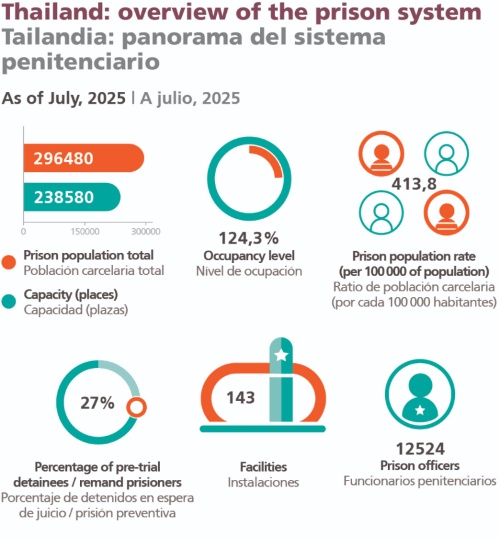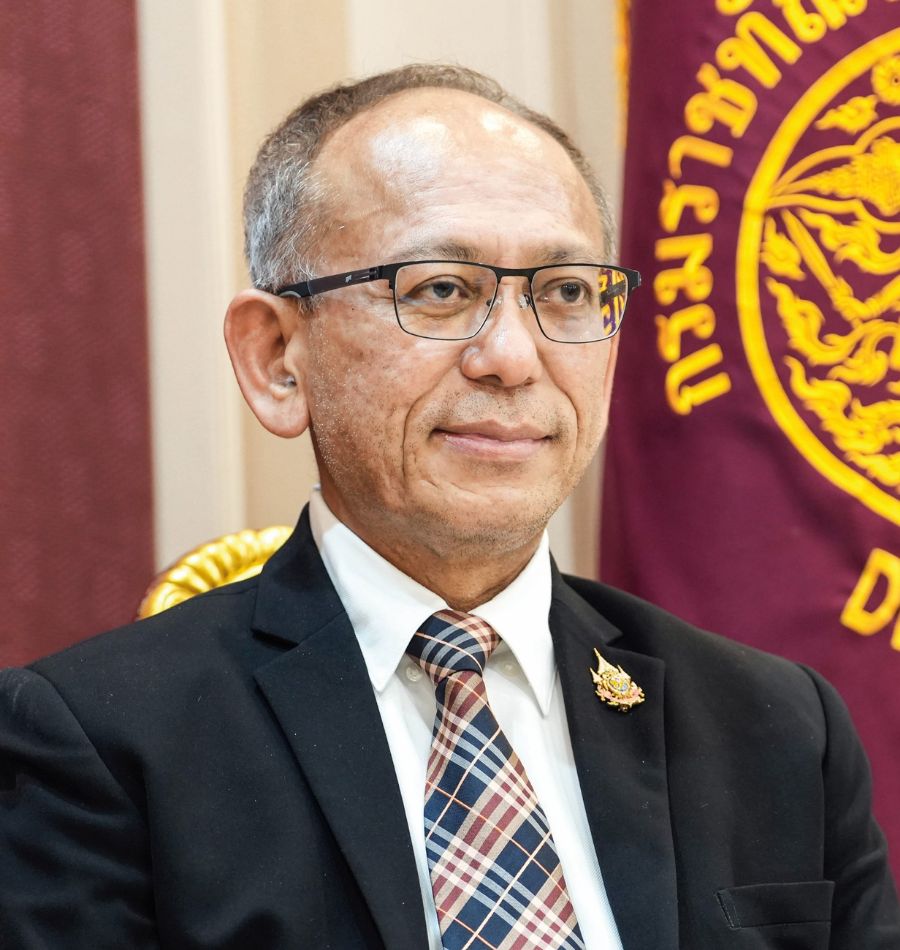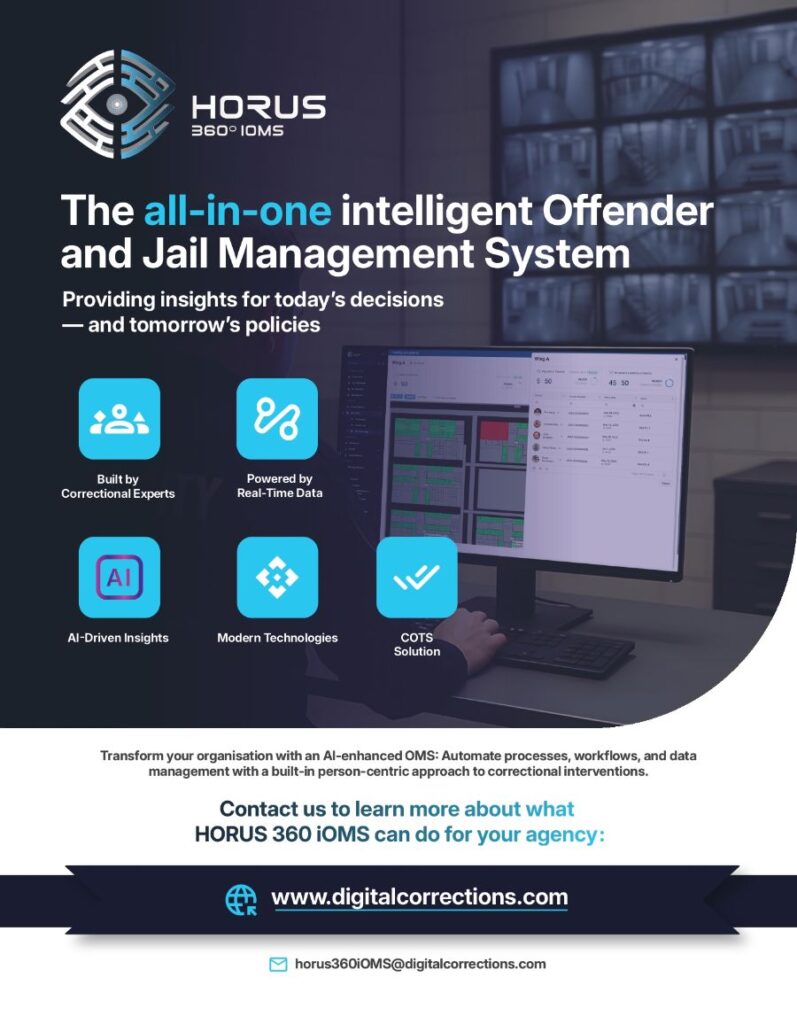Interview
Sahakarn Petchnarin
Director-General of the Department of Corrections, Thailand
In this interview, Sahakarn Petchnarin, Director-General of Thailand’s Department of Corrections, outlines the Department’s current priorities: from easing pressure on the system suffering from persistent overcrowding to expanding access to education, vocational training, and digital tools under the Smart Prison initiative. He also reflects on steps taken to make rehabilitation more tailored and inclusive, including gender-sensitive policies and support for individuals of diverse backgrounds.
What would you identify as the main challenges currently facing Thailand’s correctional system, and what measures are being
prioritised to address them?
SP: Currently, the Thailand Department of Corrections is facing the challenge of prison overcrowding. As of 1 December 2024, a total of 277,475 individuals were held across the correctional system: 243,329 men and 34,146 women. However, the standard capacity of prisons and correctional institutions, based on 1.6 square metres of sleeping space per person, allows for only 245,293 individuals. This has led to overcrowding, making it harder for the Department to manage the prison population effectively and to deliver rehabilitation and behavioural development programmes in a thorough and efficient way.
To address this, we have been consistently working to mitigate overcrowding through various measures. These include transferring foreign nationals or extraditing offenders so they can serve the remainder of their sentences in their home countries. Thailand has entered into bilateral agreements with several countries for the transfer of sentenced persons, and as of August 2024, a total of 1,263 individuals had been transferred under these arrangements.
We have taken steps to build new prisons, add dormitories, and expand prison walls to make space for the growing population. Another key measure is transferring individuals to open and temporary facilities, with the Department of Corrections selecting individuals for placement in five open institutions and 51 temporary detention centres across the country.
In addition, sentence suspension is granted to eligible individuals who demonstrate good conduct, commitment to education, vocational training or work, or who have provided commendable service to the state. This allows for early release prior to the completion their full sentence, under probationary conditions.
Another measure involves assigning convicted individuals to public service work. This not only helps reduce daytime overcrowding but also encourages positive behaviour. Those taking part are allowed out of the facility during working hours and receive sentence reductions based on the number of days they participate in public service activities.
Finally, we are converting some temporary correctional facilities into open prisons to help relieve pressure on existing ones. More than 6,662 individuals are expected to be moved to these newly established open prisons.
Over the past two years, the Department of Corrections has shifted its main focus, moving away from punishment and stigmatisation towards improving quality of life and expanding opportunities for incarcerated individuals.
How has Thailand’s approach to prison rehabilitation evolved in recent years, and what principles or goals are shaping the direction of future efforts?
SP: Over the past two years, the Department of Corrections has shifted its main focus, moving away from punishment and stigmatisation towards improving quality of life and expanding opportunities for incarcerated individuals.
This change has been driven by a range of initiatives designed to rethink the role of prisons, not just as places of confinement, but as modern, forward-looking Smart Prisons that keep pace with society’s development. The strategy emphasises behavioural reform rooted in compassion, with support from both the public and private sectors to promote treatment, rehabilitation, physical and mental health care, and future planning.
A key part of this approach is the classification of incarcerated individuals. This includes separating those awaiting trial from convicted offenders, and creating individualised rehabilitation programmes based on the underlying causes of each person’s offence. These comprehensive efforts aim to support successful reintegration into society and help reduce reoffending.
In addition, the use of social enterprise models offers a clear path for skills training, job placements, and employment opportunities after release.

What role do education and vocational training play in Thailand’s rehabilitation strategy? What initiatives or programmes currently in place within Thailand’s correctional system would you highlight?
SP: The Department of Corrections places strong importance on giving incarcerated individuals access to education and vocational training, with the goal of helping them become a positive force for national development.
In 2025, a new education policy was introduced to make sure everyone has the chance to learn anytime and anywhere. This initiative was carried out in partnership with the Department of Learning Promotion (DLP), which plays a key role in developing curricula that allow learning credits to count toward the 2008 Non-Formal Basic Education Curriculum –specially adapted to meet the needs of people in prison. This approach helps shorten the time needed to complete studies and makes it easier to earn recognised qualifications. In addition, the DLP has approved the Department of Corrections’ behavioural development curriculum, which is eligible as optional courses and is currently being piloted in 13 correctional institutions.
On the vocational training side, a policy has been put in place requiring all 10 regional districts to establish correctional facilities that also function as certified skills testing centres, in line with Ministry of Labour standards. The Sufficiency Economy Philosophy has also been adopted as a guiding principle to help individuals rebuild their lives after release.
JT: In February 2025, Bangkok hosted the Women in Corrections Conference, marking the 15th anniversary of the UN Bangkok Rules. The event highlighted progress and ongoing challenges in implementing gender-sensitive policies for women in prison.
What progress has been made in this area, and what future plans are in place to further enhance the treatment and rehabilitation of women in custody?
SP: In 2011, the Department of Corrections formally adopted the Bangkok Rules to promote the humane treatment of women in custody, throughout the entire correctional process, from admission through to preparation for release.
To support effective implementation, the Department uses the Index of Implementation developed by Penal Reform International (PRI), which has been translated and adapted by the Thailand Institute of Justice. This index, together with a concise version of the Bangkok Rules manual, gives correctional staff clear guidance on the principles and standards to follow in practice.
The implementation framework covers nine key areas: prison policy; admission and registration procedures; hygiene standards; security measures; maintaining contact with the outside world; classification and individualised treatment; management of specific groups such as foreign nationals, ethnic minorities, and pretrial detainees; care for pregnant women, breastfeeding mothers, and those with children; and support for reintegration after release.
Currently, 107 prisons and correctional institutions housing women have adopted and put the Bangkok Rules into practice.
A core principle of these rules is non-discrimination, emphasising that addressing the gender-specific needs of women and providing them with targeted rehabilitation does not amount to unequal treatment. Most correctional facilities were originally designed for men and often fail to accommodate the different physical, psychological, and social needs of women. Overlooking these differences can result in women being denied fair and effective rehabilitation, reinforcing existing inequalities.
The Department of Corrections also places strong focus on gender[1]sensitive policies for women in custody, ensuring fair and equal treatment for individuals of all sexual orientations and gender identities (LGBTIQ+). Equal treatment and non-discrimination are central values, with a commitment to treating everyone in custody with fairness, dignity, and respect for their human rights. Correctional practices are applied based on self-identified gender, rather than solely biological sex, including in matters such as accommodation, clothing, forms of address, and access to healthcare and support.
Recognising the increased vulnerability of LGBTIQ+ individuals to harassment and sexual abuse, we have introduced protective measures such as safe and appropriate accommodation, ensuring that body searches are carried out by staff of the same gender, and facilitating access to mental health care and counselling.
In line with international standards, we have formulated a strategic approach to improve care and rehabilitation for women in custody. This includes strengthening vocational training programmes that match labour market needs and bringing technology into education to help build digital skills for reintegration after release.
In terms of healthcare, individuals of different gender identities may have specific needs, including access to hormone therapy and mental health support. For pregnant women in custody, we use technology in training sessions on childcare, covering everything from prenatal to postnatal care. Women with children are also informed about their children’s rights so they can access the support available during incarceration.
In short, improving the care and treatment of women in custody must be grounded in respect for human dignity, a commitment to non-discrimination, and attention to individual needs. This helps ensure that they can live safely and with a decent quality of life, while preparing for a successful return to society.
JT: Thailand also hosted the 2025 Corrections Technology Conference (CTC), highlighting its commitment to integrating digital solutions in corrections, including tools for education, telemedicine, and case management.
How has Thailand’s participation in these global forums influenced its own policies and innovations in correctional practice?
SP: We were honoured to co-host CTC 2025 alongside the International Corrections and Prisons Association (ICPA), and we sincerely value the partnership and knowledge exchange it enabled.
Engaging in global forums such as this allows us to stay at the forefront of correctional innovation. Learning from international peers has helped us accelerate the adoption of technologies that are reshaping how we manage prisons, such as digital case management, e-learning, and telemedicine.
Technology plays a critical role in making prisons safer, supporting incarcerated individual’s rehabilitation, and improving the working environment for staff. It enhances transparency, operational efficiency, and enables more personalised rehabilitation plans. Ultimately, it helps us build a corrections system that not only upholds security but also supports long-term reintegration and contributes to a safer society.
Currently, the Department of Corrections is implementing its “Smart Prison” initiative across 33 major facilities, focusing on four key areas: prison security, prison population management, rehabilitation support, and staff performance enhancement.
Integrated systems, such as AI-powered surveillance, biometric recognition, smart wristbands, and self-service kiosks are being introduced to strengthen operational control, safeguard human rights, and improve service delivery under limited staffing.
Participation in CTC has reaffirmed our commitment to digital transformation in corrections, and we look forward to continued collaboration with ICPA and our global partners to drive sustainable progress.
Sahakarn Petchnarin
Director-General of the Department of Corrections, Thailand
Sahakarn Petchnarin is the Director-General of the Department of Corrections, responsible for overseeing the country’s prison system and corrections policies. He previously served as Director-General of the Department of Juvenile Observation and Protection, where he placed strong emphasis on the rehabilitation of juvenile offenders.
Advertisement



